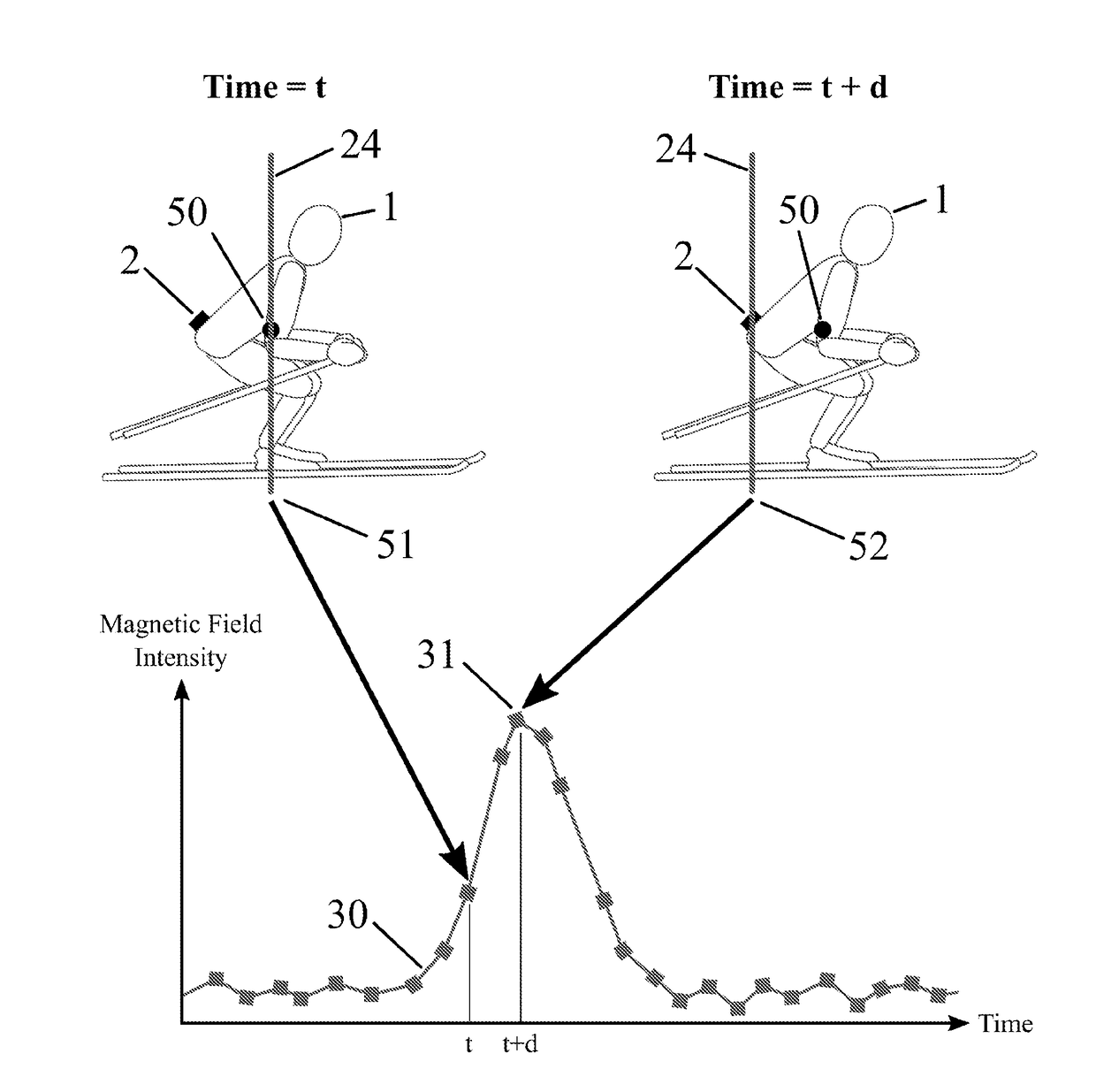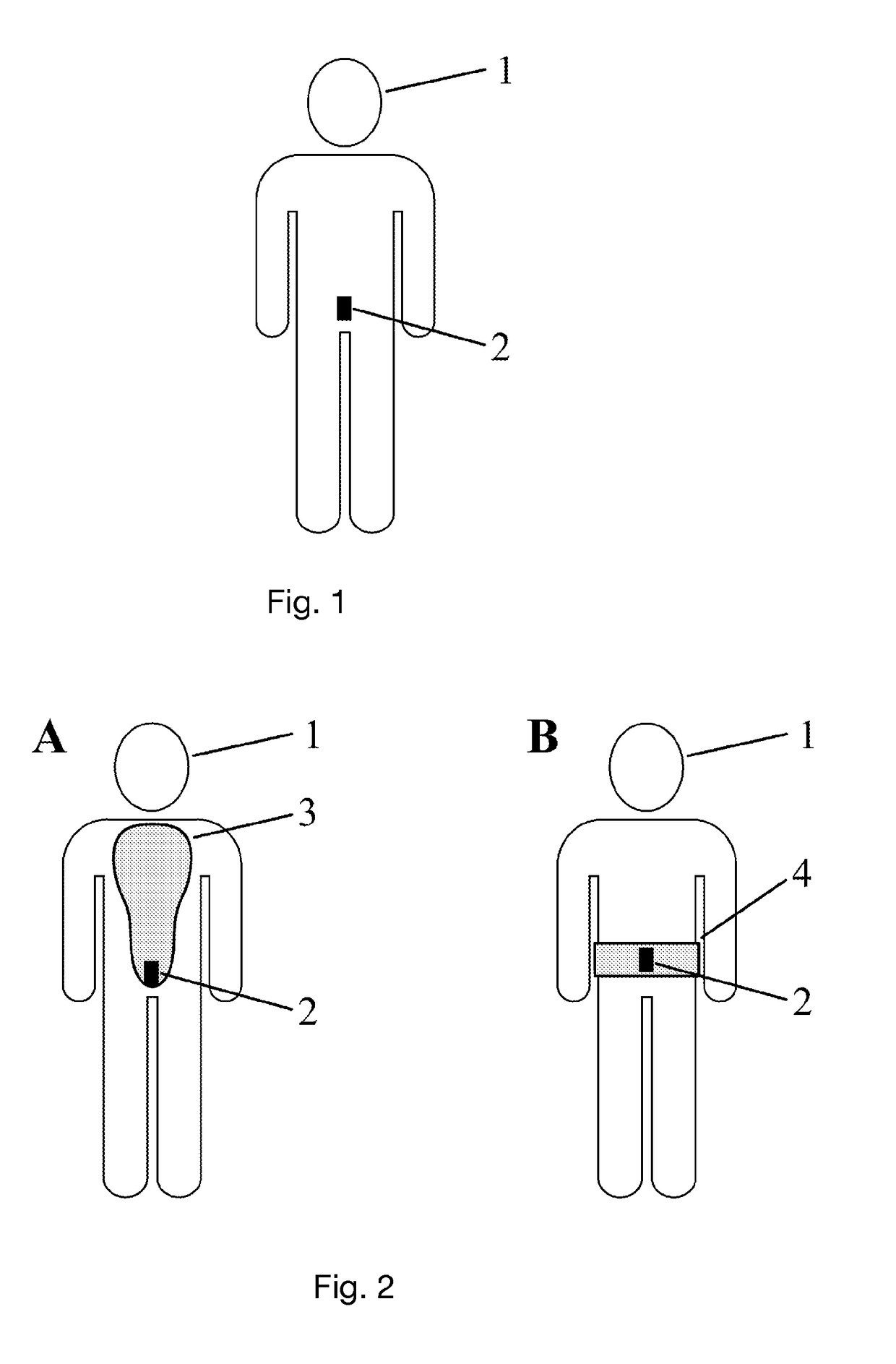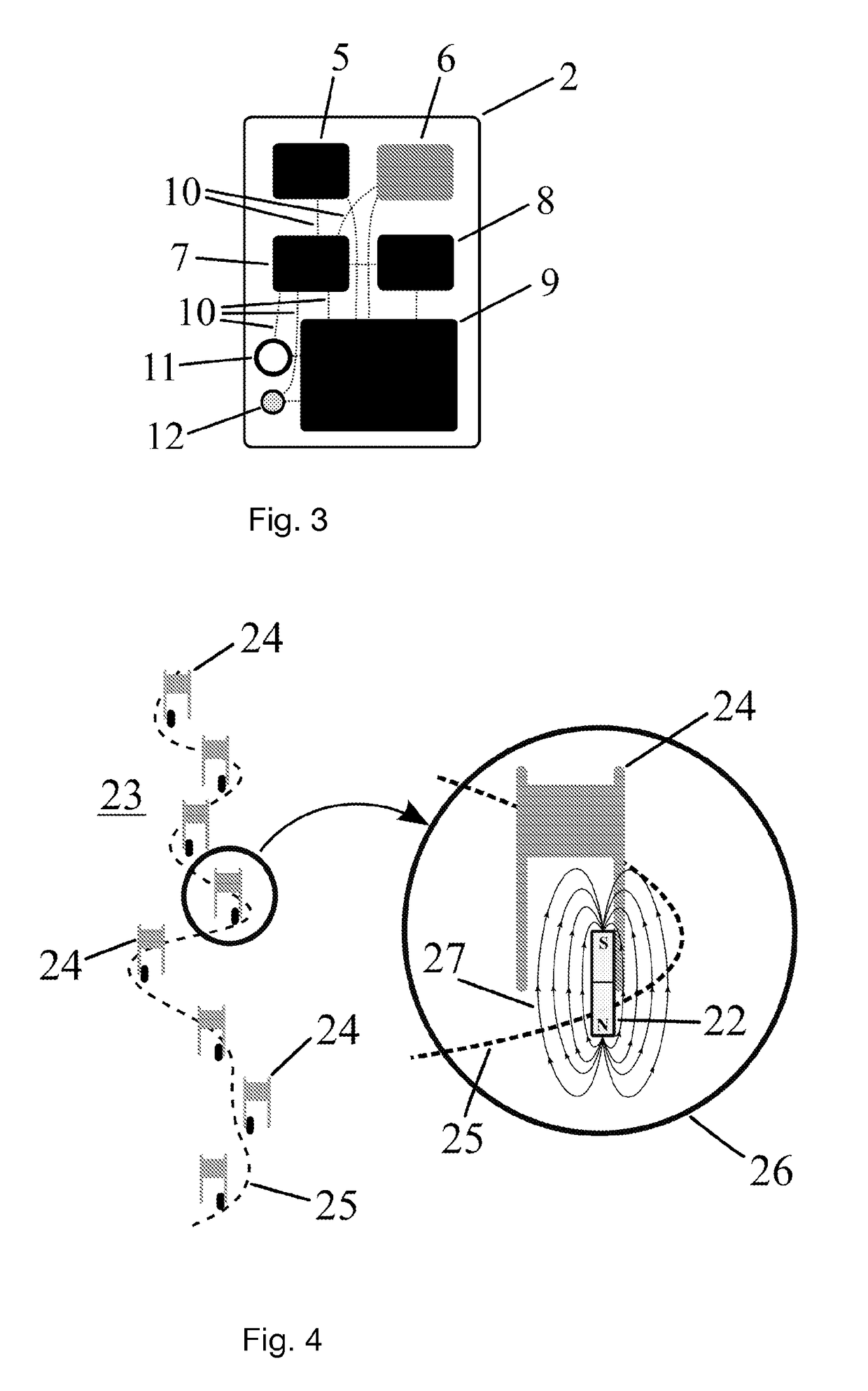High Precision Trajectory and Speed Sensor and Measuring Method
a speed sensor and high-precision technology, applied in the field of timing systems, can solve the problems of inability to obtain precise timing information from video analysis, time-consuming current analysis procedure, and inability to provide information, and achieve the effect of causing a large time loss
- Summary
- Abstract
- Description
- Claims
- Application Information
AI Technical Summary
Benefits of technology
Problems solved by technology
Method used
Image
Examples
Embodiment Construction
[0058]A typical example of the invention will now be described by referencing the figures.
[0059]Referring to FIG. 1, in a preferred embodiment of the invention a magnetometer sensor unit 2 is attached to the athlete 1 using adhesive tape. The magnetometer sensor unit 2 is attached closely to the sacrum of the athlete 1, on his lower back.
[0060]Referring to FIG. 2A, in another preferred embodiment of the invention the magnetometer sensor unit 2 is integrated in a back protector 3, for example a standard protector complying to the rules of the Federation Internationale de Ski (F.I.S.). Referring to FIG. 2B, in another preferred embodiment of the invention the magnetometer sensor unit 2 is integrated into a kidney belt 4.
[0061]Referring to FIG. 3, this illustrates an example embodiment of the magnetometer sensor unit 2 comprising of a high performance 3D magnetic sensor 5 capable of sampling at least at 50 Hz. In an example embodiment this may be for example a Melexis MLX90393 sampling...
PUM
 Login to View More
Login to View More Abstract
Description
Claims
Application Information
 Login to View More
Login to View More - R&D
- Intellectual Property
- Life Sciences
- Materials
- Tech Scout
- Unparalleled Data Quality
- Higher Quality Content
- 60% Fewer Hallucinations
Browse by: Latest US Patents, China's latest patents, Technical Efficacy Thesaurus, Application Domain, Technology Topic, Popular Technical Reports.
© 2025 PatSnap. All rights reserved.Legal|Privacy policy|Modern Slavery Act Transparency Statement|Sitemap|About US| Contact US: help@patsnap.com



